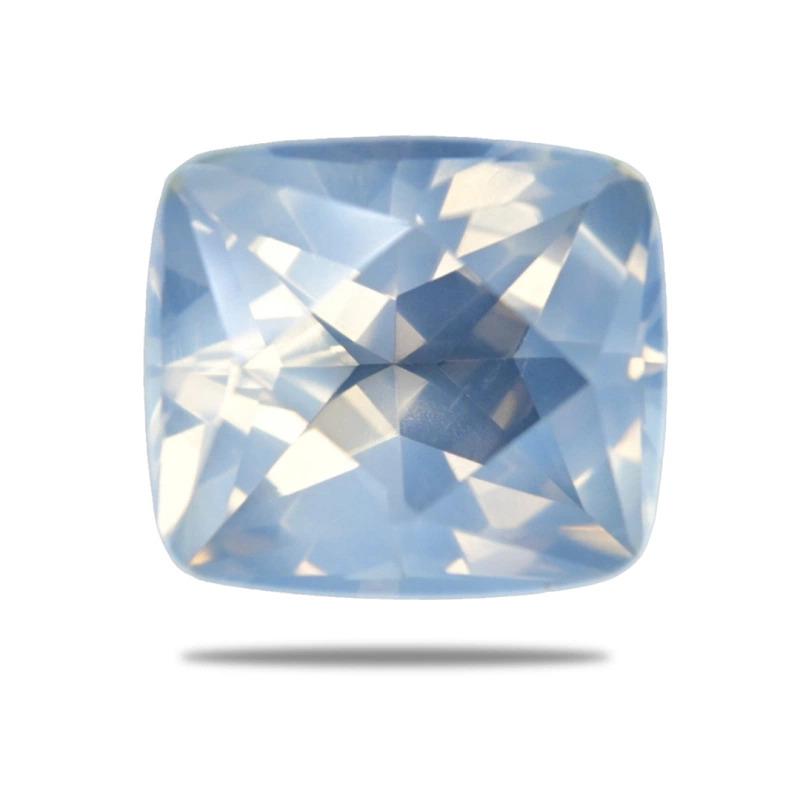
六月诞生石:珍珠、紫翠玉和月光石
只有两个月份有三种官方诞生石,六月就是其中之一!六月的三种宝石是什么?官方六月诞生石是月光石、珍珠和紫翠玉。
六月在古罗马被称为Junius或lunius ,以婚姻女神朱诺的名字命名,或以拉丁语iuniores命名,意为“青春”。
六月的古代庆祝活动包括罗莎莉亚节(玫瑰节)、维斯塔莉亚节(纪念灶神维斯塔并重新净化罗马)和夏至(夏季的第一天)。
时至今日,人们仍在庆祝夏至,以及父亲节、 LGBTQ+ 骄傲月和国际儿童节等现代六月节日。
六月象征着兴奋、平衡和复兴。它也与婚姻息息相关,婚礼季在六月达到顶峰。
三种六月诞生石正体现了这些理念:亚历山大变石、珍珠和月光石。今天,我们将探讨这三种六月诞生石的历史、特性和魅力。
video: https://www.youtube.com/watch?v=v2PJNAbPgU8
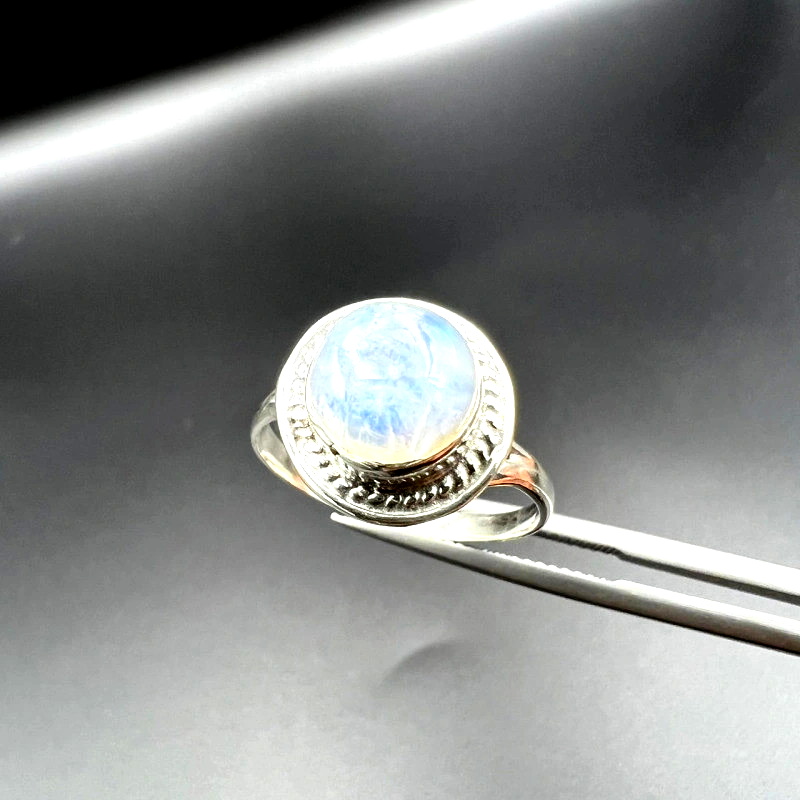 上图:月光石戒指
上图:月光石戒指
六月诞生石的历史和文化意义
你可能想知道:为什么六月诞生石有三种?其实,六月诞生石并不总是三种。
六月诞生石随时间变化
早期诞生石列表源自《圣经》文本,将六月诞生石解释为玛瑙或绿宝石,现在则解释为五月诞生石。
蒂芙尼公司 (Tiffany & Co.) 于 1870 年出版了一本名为《格里高利诞生石诗》的小册子,其中注明作者不详,六月诞生石为珍珠,由此开启了现代诞生石清单的正式化。
第一份官方标准化清单由美国珠宝商协会(现为美国珠宝商协会)于1912年创建,其中将珍珠列为首要,月光石则作为替代。这份清单也出现在英国国家金匠协会1937年的清单中。
美国珠宝行业委员会于 20 世纪 50 年代修改了 1912 年的名单,将亚历山大变石添加到 6 月份的名单中。
为什么六月的诞生石会改变?紫翠玉是一种相对较新的宝石,有一种理论认为,珠宝商认为紫翠玉比珍珠更丰富,但这种说法如今已不成立。
接下来,让我们看看每颗半宝石各自的历史。
 上图:3 世纪古罗马黄金发饰,镶嵌珍珠、祖母绿和蓝宝石;现藏于大英博物馆 | 图片来源:Vassil,公共领域
上图:3 世纪古罗马黄金发饰,镶嵌珍珠、祖母绿和蓝宝石;现藏于大英博物馆 | 图片来源:Vassil,公共领域
古代文明和神话中的珍珠
关于珍珠的最早文字记载可以追溯到公元前2206年,当时淡水珍珠被用作礼物馈赠中国皇室。已知最古老的珍珠首饰是“苏萨珍珠”项链,可追溯到公元前420年左右。考古证据也表明,印度河流域和斯里兰卡的史前时期就已使用珍珠母。
古希腊人将珍珠与高贵联系在一起,认为珍珠是由爱神阿佛洛狄忒的眼泪形成的。根据神话传说,阿佛洛狄忒也诞生于大海。同样,古代日本的传说也认为珍珠源自美人鱼或仙女的眼泪。
古罗马人把珍珠称为“margaritae”或“unio” 。他们将珍珠作为身份的象征,只有富人和贵族才能佩戴。
在古埃及,珍珠与医治女神伊西斯联系在一起,并被放置在坟墓中。一个著名的故事是,克利奥帕特拉与马克·安东尼打赌,她把一只珍珠耳环放进醋里喝了下去,从而赢得了胜利!
一个印度教传说认为,珍珠是从月亮上掉落的露珠。另一个关于珍珠起源的印度教神话是,神克里希纳发现了第一颗珍珠,并将其作为结婚礼物送给了他的女儿,以保佑她免于守寡,并确保婚姻美满长久。
此外,吠陀经文中关于珍珠起源的说法是,地球的水和神圣的能量孕育了珍珠,然后用闪电使其受精。
在伊斯兰教中,《古兰经》将珍珠描述为装饰天堂的水果和王冠,赠予进入天堂的人。
对这种六月诞生石含义的其他解释包括:在古代中国象征防火,在欧洲象征纯洁。
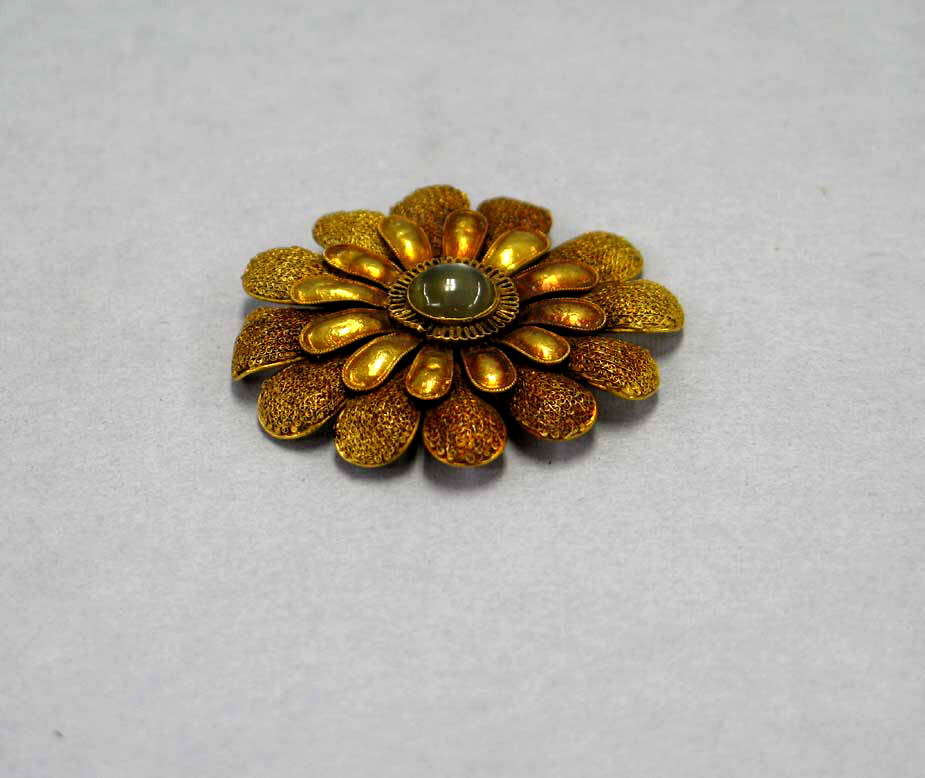 上图:中国宋代金饰,镶嵌月光石,年代可追溯至 960-1279 年;现藏于大都会艺术博物馆| 图片来源:大都会博物馆,公共领域
上图:中国宋代金饰,镶嵌月光石,年代可追溯至 960-1279 年;现藏于大都会艺术博物馆| 图片来源:大都会博物馆,公共领域
从古代到现代的月光石历史
月光石的名字来源于它的青白光彩,看起来像柔和的月光一样从内部散发光芒。
古罗马传说,月光石是由月光光束凝固而成,是月亮女神戴安娜赐予的礼物。他们凝视着这块石头,看到了戴安娜,并获得了她的爱与智慧。
古希腊人将月光石称为“阿佛洛狄忒”(Aphroselene) ,这是阿佛洛狄忒(Aphrodite)和月亮女神塞勒涅(Selene)的混合词。他们还将月光石与魔法女神赫卡忒(Hecate)以及狩猎和贞洁女神阿尔忒弥斯(Artemis)联系在一起。
在古印度,据说月光石会随着月亮的盈亏而从月亮女神旃陀罗(或月神象头神)的额头上发光或暗淡。
根据亚洲神话传说,蓝色月光石每21年就会被冲上岸。古代东亚人将月光石悬挂在树上,祈求五谷丰登,并相信宝石内部变幻的光芒暗示着其内部居住着神灵。
旅行者还使用月光石护身符来寻求保护,因此六月诞生石有“旅行者之石”的昵称。
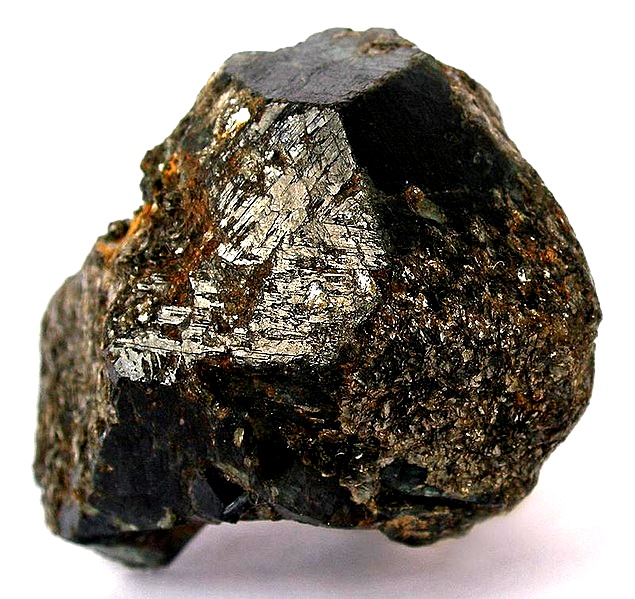 上图:产自俄罗斯乌拉尔地区的一颗优质经典亚历山大变石,形状坚固,边缘略有磨损,内部呈宝石状,但仍可见到颜色变化;附带 1850 年的标签 | 图片来源:Rob Lavinsky, iRocks.co m – CC-BY-SA-3.0
上图:产自俄罗斯乌拉尔地区的一颗优质经典亚历山大变石,形状坚固,边缘略有磨损,内部呈宝石状,但仍可见到颜色变化;附带 1850 年的标签 | 图片来源:Rob Lavinsky, iRocks.co m – CC-BY-SA-3.0
紫翠玉从俄罗斯走向世界的旅程
亚历山大变石是最近发现的六月诞生石。这颗会变色的红绿宝石于1834年在俄罗斯乌拉尔山脉被发现,并以即将登基的沙皇亚历山大二世(当时他刚满16岁)的名字命名。
关于谁最先发现并命名亚历山大变石,说法不一。可能是芬兰矿物学家尼尔斯·古斯塔夫·诺登舍尔德 (Nils Gustaf Nordenskiöld)、乌拉尔矿场经理瓦西里耶维奇·科科温 (Vasilevich Kokovin)、德国矿物学教授古斯塔夫·罗斯 (Gustav Rose),也可能是俄罗斯矿物学家 LA Perovskii 伯爵。无论如何,LA Perovskii 伯爵在 4 月 29 日将这颗宝石作为生日礼物赠予亚历山大二世。
俄罗斯是唯一的金矿来源,尽管到19世纪90年代,他们的金矿几乎已经枯竭。1987年,巴西成为另一个金矿来源,其次是斯里兰卡和津巴布韦。
俄罗斯的亚历山大变石成为威望和民族自豪感的象征,恰巧也体现了俄罗斯军队的色彩。据说亚历山大二世每天都会佩戴一枚亚历山大变石戒指作为护身符。
其他文化将六月诞生石的颜色变化解读为危险的信号。
历史?了解一下。现在我们来仔细看看这些诞生石的颜色和独特之处。
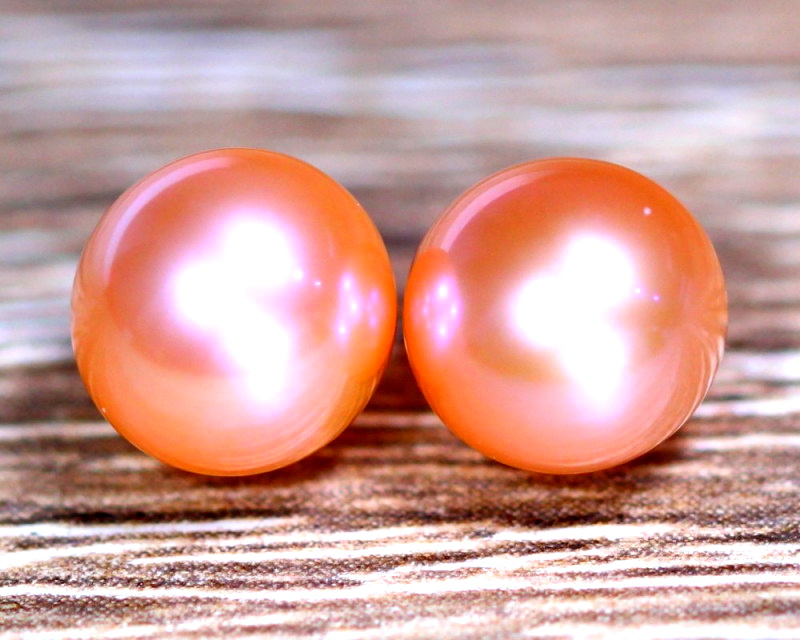 上图:粉色阿古屋珍珠
上图:粉色阿古屋珍珠
珍珠:海洋宝石
珍珠可以说是“经典”的六月诞生石,它的独特之处毋庸置疑。首先,它们属于类矿物(而非矿物),并且是少数有机宝石之一,即由生物体生成的宝石。
在这种情况下,珍珠是在软体动物体内形成的,当沙子等刺激物进入其壳中时,软体动物会分泌一层层珍珠层包裹住刺激物。珍珠层由碳酸钙(方解石、霰石或两者兼有)构成。这些层层堆积的珍珠层形成了标志性的“珠光”光泽。
这种六月生日石的稀有性,只存在于天然珍珠中,天然珍珠在野外生长,无需人工干预。如今,大多数珍珠宝石都是养殖珍珠,它们的生长方式与天然珍珠相同,只是在珍珠养殖场人工植入了刺激物。
天然珍珠通常较小且形状不规则,而养殖珍珠通常呈圆形或近圆形。您可以随时将珍珠送至GIA等鉴定机构,验证其来源。
珍珠的种类和价值
一些最受欢迎的珍珠类型包括:
Akoya :最初也是最高品质的养殖珍珠;珍珠层形成较慢,意味着光泽更好、形状更圆;通常漂白并染成白色,带有玫瑰色调
淡水:由淡水软体动物形成,通常为养殖;通常比海水珍珠更厚,形状更不规则,光泽度更低,但颜色更鲜艳
咸水:由咸水软体动物形成,通常为养殖;美丽珍珠的历史标准
南海:采用银唇或金唇咸水牡蛎养殖;珍珠层比阿古雅牡蛎更厚且更大;通常为白色、奶油色或金色
大溪地:主要在法属波利尼西亚用黑唇海水牡蛎养殖;只有天然黑色珍珠,但通常为深绿色或灰色;可以是白色、蓝色、银色、紫色或黄色;显示称为“东方”的虹彩
最大的价值因素是天然与养殖——天然珍珠六月诞生石的价格要高得多。
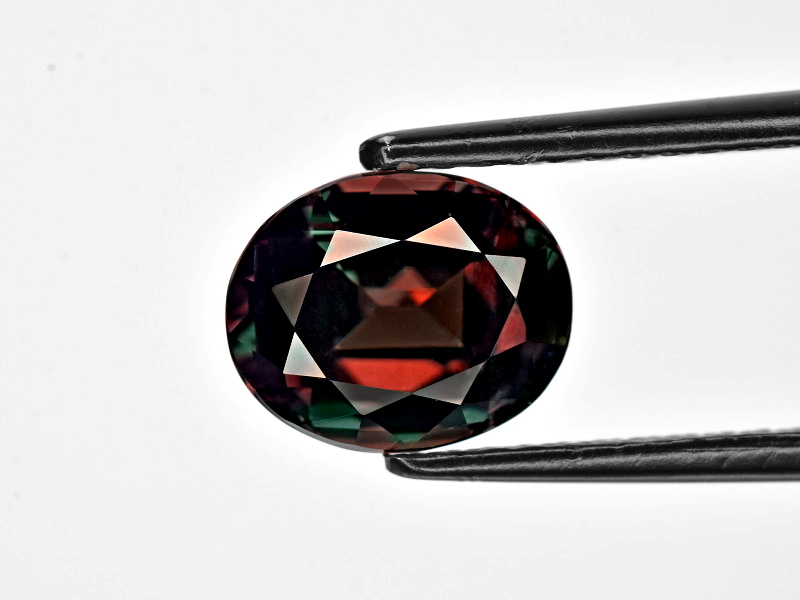
亚历山大变石:变色龙宝石
紫翠玉是金绿玉的一种,其中部分铝元素被铬取代。紫翠玉因含有铬杂质而变色。
这颗六月生日石是什么颜色的?最好的亚历山大变石在日光下呈祖母绿,在白炽灯下则呈红紫色,因此得名“白天是祖母绿,晚上是红宝石”。这些亚历山大变石大多产自俄罗斯。
其他颜色变化包括从黄色或桃红色到亮粉色,或从蓝绿色到洋红色。斯里兰卡亚历山大变石通常呈橄榄绿色,而巴西亚历山大变石则颜色较浅。
紫翠玉的价值主要在于其纯度、变色程度、以及变色比例。
猫眼变石尤其稀有且珍贵。
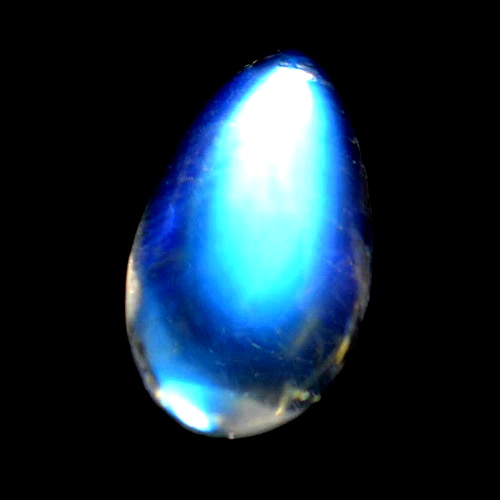
月光石:璀璨美丽与色彩
在三种六月诞生石中,月光石最容易获得,但同样令人惊艳。
月光石由交替排列的长石(钠长石和正长石)薄层组成。当光线进入这些薄层时,会产生月光石标志性的漂浮内部辉光,称为“青白光彩”。
最好的月光石是无色的,带有纯蓝色的青白光彩。但六月生日石的颜色也包括桃色、绿色和橙色等色调。
大多数月光石被切割成凸圆形,但刻面月光石可以遮盖瑕疵,增强其闪耀度。其他月光石切割方式包括珠饰和雕刻。
这涵盖了矿物学和外观,所以现在是时候研究六月诞生石及其含义了。
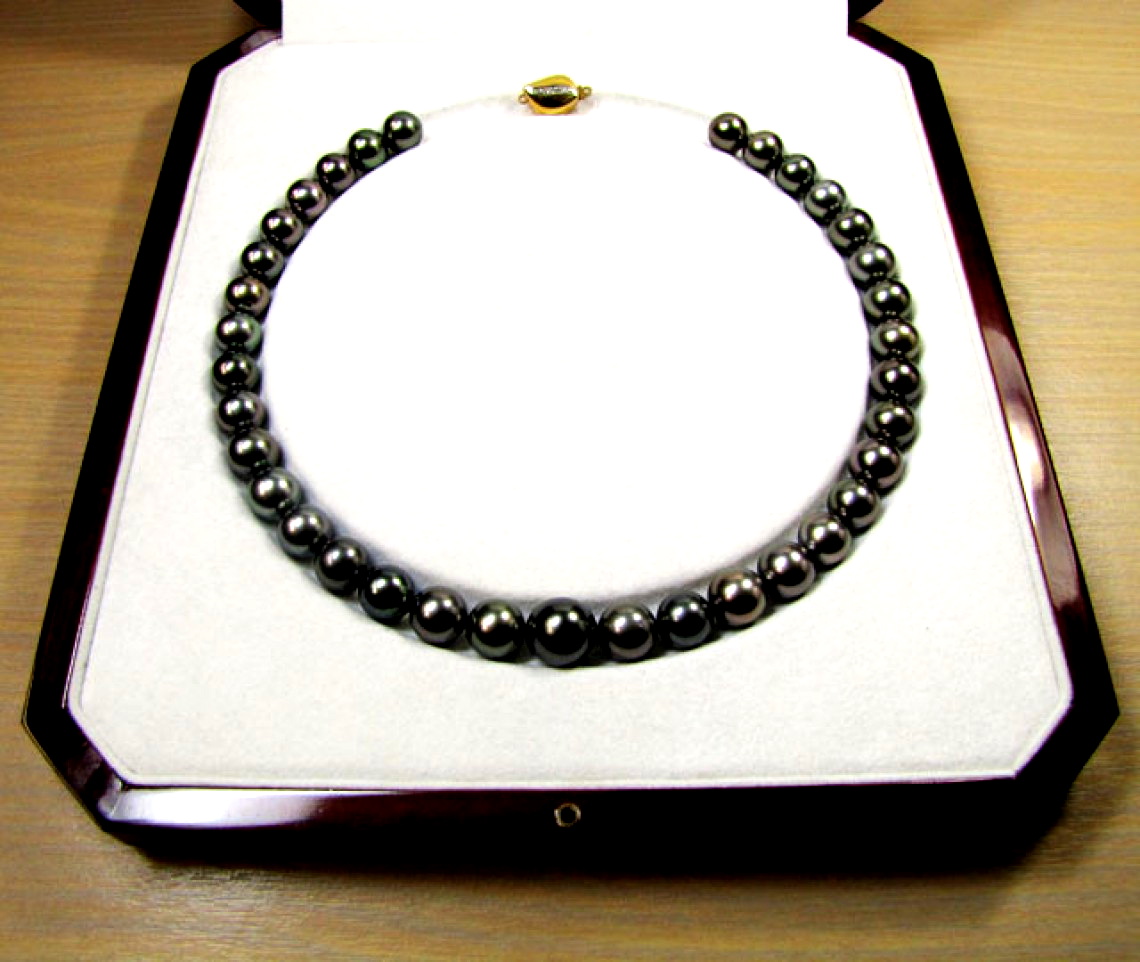 上图:大溪地珍珠项链
上图:大溪地珍珠项链
珍珠:象征意义和重要性
纵观历史,珍珠一直与女性气质、智慧和转变联系在一起。
女性气质
珍珠飘逸的外形和水生起源,令人联想到月亮、女性气质和水。月亮和潮汐与传统的女性理念息息相关,即感受人不断变化的情绪。
人们相信珍珠的月相能增强直觉,连接精神世界。此外,珍珠的传统功效还包括改善生育能力、缓解荷尔蒙失调以及促进分娩。
智慧
珍珠和知识之间的联系可以用“智慧珍珠”来体现,意思是明智的建议,或者“不要把珍珠丢在猪面前”,意思是明智地不把有价值的东西提供给那些不会欣赏的人。
在《圣经》中,珍珠通常象征着智慧。印度教、道教和佛教哲学都认为“火焰珍珠”象征着精神智慧。一些古人认为珍珠蕴含着人生的教诲,并能引导死者走向来世。
六月诞生石的“隐秘性”和形成也代表着从经验中获得的智慧。
转型
珍珠的形成需要数年时间,通常从一粒沙子开始,逐渐发展成一颗华丽的宝石。毫不奇怪,这些六月诞生石象征着蜕变。
引用励志演说家苏珊·C·杨的话:“牡蛎将最初的烦恼和侵扰转化为了自身的价值。”
古代亚洲人认为珍珠象征着灵魂通往完美的旅程。塔罗牌读者将珍珠与愚者的旅程联系起来,认为这是一条自我发现之路。
 上图:镶嵌钻石的紫翠玉戒指| 图片来源:Christina Rutz, Flickr , CC-BY-SA-2.0
上图:镶嵌钻石的紫翠玉戒指| 图片来源:Christina Rutz, Flickr , CC-BY-SA-2.0
紫翠玉的神秘感和形而上学特性
紫翠玉没有太多的传说,但它仍然很有意义。
和珍珠一样,紫翠玉象征着蜕变。据说这颗六月石能让人焕发活力,帮助你拥抱生活的变化。
变色的石头也代表着平衡,无论是情绪平衡、身体和精神平衡,还是仅仅是保持脚踏实地。
亚历山大变石的其他象征意义包括好运、成功和创造力。

月光石的意义和力量
月光石与珍珠具有相同的形而上学特性,与女性气质、智慧和月亮有关。
历史上,魔法师们会根据月相变化,策略性地使用月光石施展法术。许多神秘主义者在冥想时使用月光石作为聚焦工具。水晶治疗师推荐使用月光石治疗失眠。
月光石也象征着爱情和婚姻。
印度的一项传统是,情侣们会在满月时将六月诞生石放入口中,以预测未来。古希腊人和印度人都相信月光石具有预知未来的功效。
对于没有伴侣的人来说,有一个传说说,你可以在满月时用月光石表达心意,并把它带到下一个满月,这样就能吸引到你的真爱。
用六月诞生石庆祝生命中的美好时刻
想知道最受欢迎的六月诞生石是什么吗?
对于大多数珠宝来说,珍珠是王者。然而,亚历山大变石在六月诞生石戒指中更为常见,而月光石则是最常见的。
从占星学角度来看,六月双子座的诞生石是什么?紫翠玉是六月双子座的最佳诞生石,能够满足他们对平衡的渴望。
对于六月出生的巨蟹座来说,月光石和珍珠与巨蟹座的守护星(月亮)完美结合,增强了该星座的自然直觉。
赠送六月诞生石是庆祝所爱之人的一种有意义的举动。
选择范围包括六月诞生石珠宝、镶嵌诞生石的玫瑰装饰(六月花)以及收礼人最喜欢的六月水晶画。
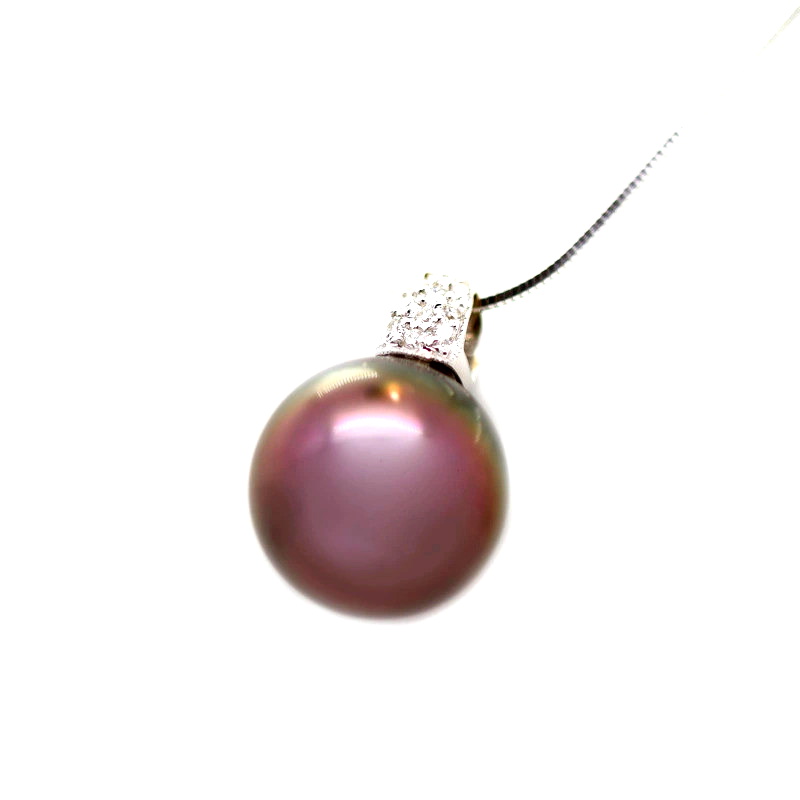 上图:养殖海水珍珠项链
上图:养殖海水珍珠项链
您最喜欢哪款六月珠宝?
六月象征着爱、激情和平衡,亚历山大变石、月光石和珍珠正是这些元素的典范。这些宝石各有魅力,而且外观和价格各异,这意味着无论预算多少,总有一款完美的六月诞生石适合您!
搜索Gemstone Encyclopedia
最新的文章
彩虹格纹日光石是一种长石,由于内部含有各种包裹体,呈现出三种绚丽的光学效应。它绚丽多彩的光泽和格纹图案使其成为收藏家梦寐以求的珍宝!
12th Jan 2026
文章分类
How To's is where you will find helpful articles from gem Rock Auctions on how to cut gemstones, select gemstones and buy gemstones.
9文章数



